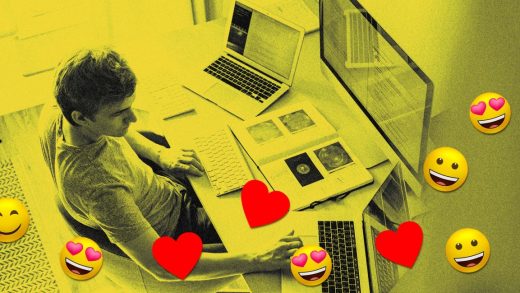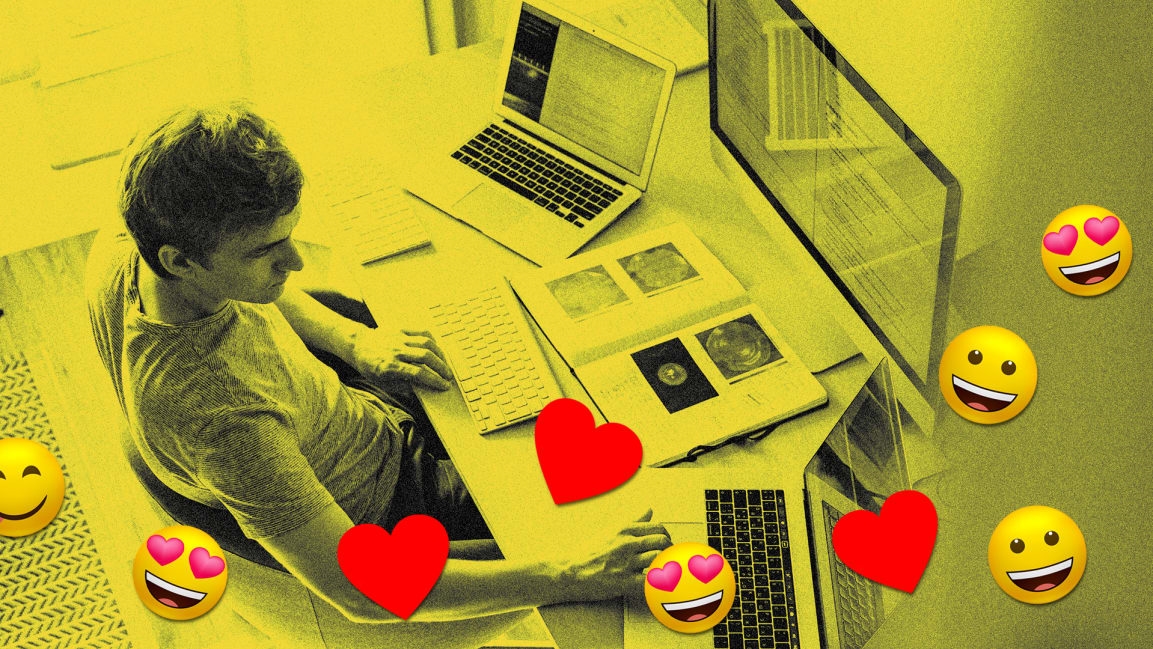How remote work helped us move past old-school ‘professionalism’
Over the past year, much has been made of where, when, and how we work. But the sweeping shift to working remotely has raised a deeper question that we’re still not sure how to answer: Who are we at work?
The pandemic has scrambled so much of the “normal” professional experience—commutes, workspaces, business hours, childcare, business travel—that it’s also rewiring our concept of professionalism itself.
For me, “professionalism” began 18 years ago when I started as an intern at Microsoft. Today, I lead a team of more than 500 designers and researchers creating the next generation of communication and creation experiences for Microsoft 365, across both work and life. As you can imagine, design at Microsoft has changed dramatically over the years, and that includes how people collaborate.
When it comes to traditional modes of expression, both Microsofties and our customers typically drew a clear line between work style and personal style. Take emoji or reactions as an example. I use them freely in texts or on social media, but on a productivity platform like Microsoft Teams? As much heart as I put into my work, I never thought I’d “heart” things there. I do that at home, where my guard is down. But now that the office is my home, there are hearts all over the place. I heart everything (unless I’m giving it a thumbs down).
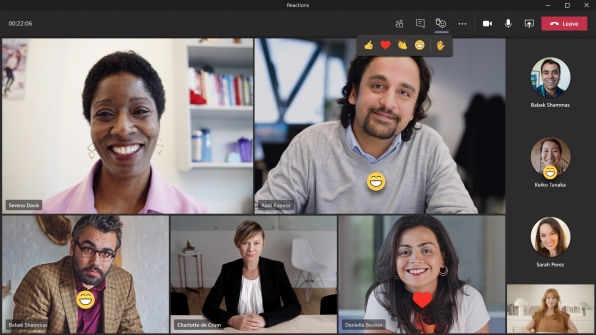
I see this with my colleagues, too. I still stifle a laugh when a famously stone-faced executive “hearts” a message because of the fact that the indication of love in this context catches me by surprise. Why should it, though? Over the past year I have personally come to see many more of my colleagues at all levels in a new way—as whole people with pets, kids, Wi-Fi that fails them, and garbage trucks that pass by at the wrong moment.
Weathering the professional effects of COVID-19 together has introduced an authenticity to digital communication that can strengthen how we relate at work, even—or perhaps especially—in remote environments. It offers humanizing glimpses into areas of our lives that may have previously been walled off from our coworkers, and it’s ironic that this is happening through tools not traditionally known for deep human connection!
More holistically showing our lives and personalities, the pandemic is accelerating a new definition of professionalism that’s refreshingly human. Here are three key ways I’m seeing this happen within and beyond Microsoft.
Energy is the new time management
For years, product designers have focused on designing collaboration and productivity tools with time management in mind. If you could just manage your time better, you’d be able to get more done. But the pandemic made it clear that even more important than time is energy.
Acknowledging individual ways of working can catalyze the collective power of our best energy and ideas.
A new type of always-on work culture, parents trying to focus while still helping their kids learn, social isolation—the exhaustion is palpable and the effects are very real. We see it in our coworkers’ faces, in user research studies, in news headlines, and this saps the energy that fuels achievement.
This is critical because so many industries no longer define productivity as how much a person can churn out in a period of time. Instead, productivity is measured by the creativity and innovation brought to the workplace. That kind of deep thinking and originality takes energy, and we struggle with inspiration when we are fatigued, overworked, distracted, or even just while digesting lunch.
We can pick up on these energetic cues in person, sensing when someone’s batteries are low and need recharging. To help digitally communicate this, we’ve been actively exploring ways to support people’s emotional and physiological realities. Let’s make it easy for someone to share their personal preference for afternoon busy work but not creative brainstorms, because that’s when their energy dips. Acknowledging individual ways of working can catalyze the collective power of our best energy and ideas—with real individual and organizational benefits.
Expressive feedback promotes belonging
Productivity, creativity and innovation all thrive on real-time, in-person feedback, which our largely remote reality has vaporized. The nonverbal cues that encourage you to continue your presentation at the right speed, indicate someone has a question, or reassure you that joke landed the right way are critical to our work and how we feel about it.
While augmenting this kind of interaction with more expressive digital communication channels has been in the works at Microsoft for years, this crisis has added urgency and intentionality to our efforts to introduce new features like instant reactions or chat bubbles, and increased people’s interest in using them. If a picture is worth a thousand words, then why not the same for a GIF, a reaction, or an emoji?
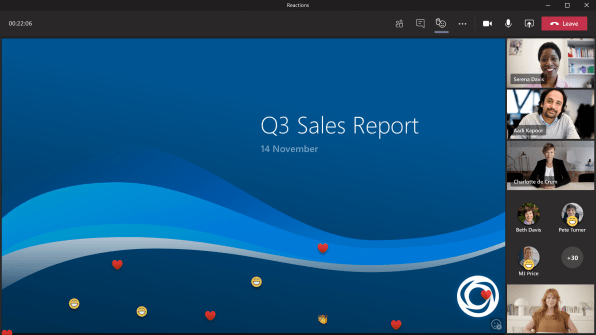
On the surface, maybe you don’t think there’s anything emotionally nuanced about using a GIF to respond to a comment in a meeting chat, but it shows a willingness to be vulnerable, introduce levity, and connect through humor. When people can’t get that laugh or clap or knowing side glance in response to a point well-made, a compliment given in passing, or a serendipitous hallway chat, we need new mechanisms to express ourselves, to approve or respectfully disagree, to show that we care and feel that we’re cared for.
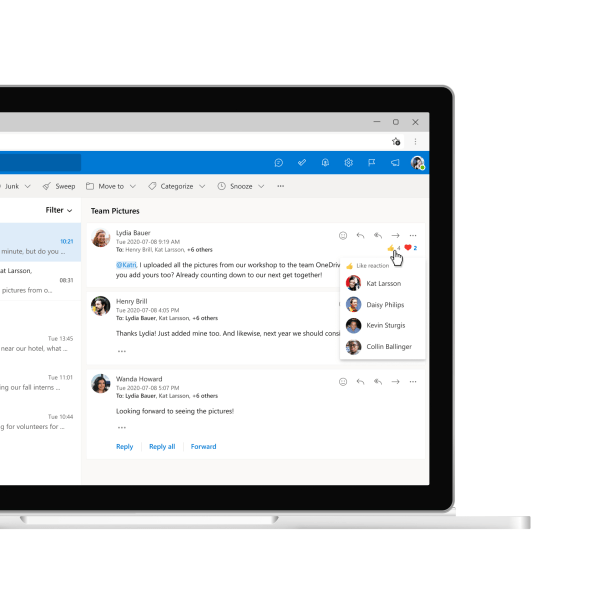
These modes of expression can also help balance power and personality dynamics. In person, it’s easy for extroverts and folks in positions of power (by role or by race) to dominate conversations. This certainly still happens remotely, but it’s far less intimidating to like a comment or “raise a hand” to ask a question. The latter is something rarely done in person after we have outgrown the classrooms of our younger days, but is totally normal in Teams, creating an effective way to help everyone’s voice be heard.
So, even if this may not be your preferred communication style, it may resonate with others, particularly those who already feel sidelined. And when you can give agency and create space for other people in your organization—which ultimately enhances productivity and innovation—it’s worth reconsidering your personal definition of “professional.”
Professional ? Emotionless
That chance to redefine professional norms—particularly as a global collective—is rare and exciting. Work norms have persisted since the dawn of the nine-to-five in the 1800s and especially since it went mainstream with the automotive industry boom in the 1920s. They’ve dictated “acceptable” workplace behaviors and hierarchies. But those systems also have created biases, inequities, and assumptions—especially among those who aren’t part of the dominant culture.
We’re creating non-hominoid avatars with human expressions and GIFs and emojis that eschew more Western norms.
It’s unrealistic to think that within a year, or even the next few years, people won’t feel the need the compartmentalize, cover, or code-switch in professional spaces. But if we can create modalities that support authentic expression and then promote a culture that normalizes their use . . . it’s a step, and hopefully a silver lining of all we have had to endure over the past year.
My team at Microsoft plans to continue to invest and innovate across all of the surfaces where someone “shows up” online. Beyond instant reactions and better backgrounds for video calls, we’re creating non-hominoid avatars with human expressions and GIFs and emojis that eschew more Western norms. More expressive themes and chat stickers are among other design-led explorations of how we communicate and connect.
The hope is that these experiences feel comfortable and genuine, underpinned by confidence, energy, and positivity. That’s what we need to be bringing to work with us each day, whether we’re going to an office building or to the kitchen table.
For those of us who’ve been working remotely for more than a year, the return to the office will be gradual, creating a hybrid environment for the foreseeable future—maybe forever. It’s exciting to imagine the lasting impact on what it means to be professional. Perhaps we’ll all come to embrace a different, durable, more human kind of professionalism so we can all achieve more and know each other more deeply.
I ? that.
Jon Friedman is corporate VP of design and research at Microsoft. He’s currently focused on how deep human insights can lead to broad global product innovation.
(55)

